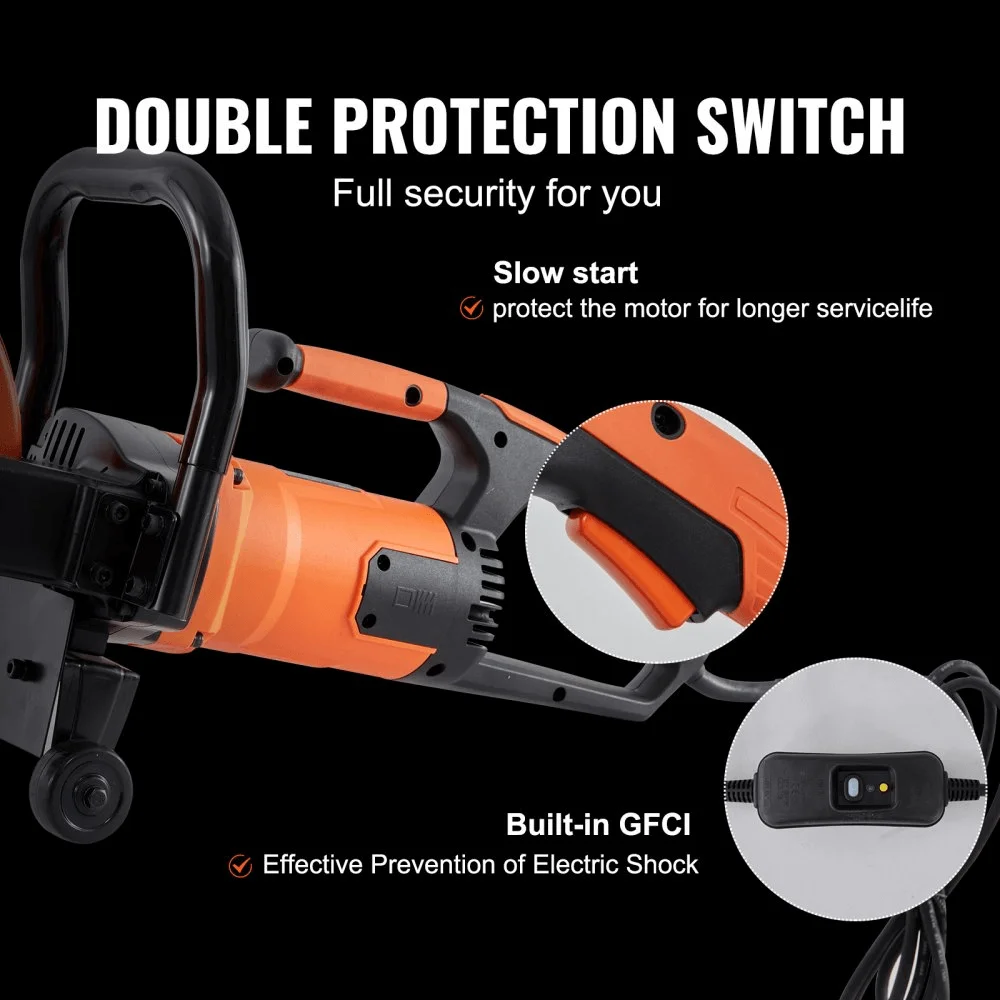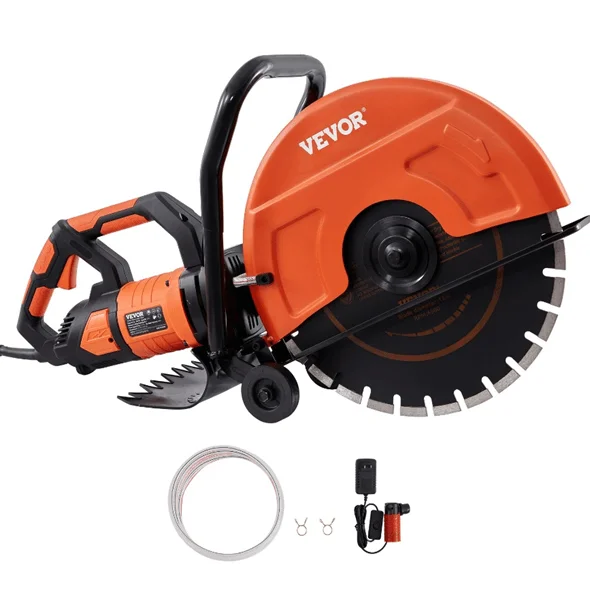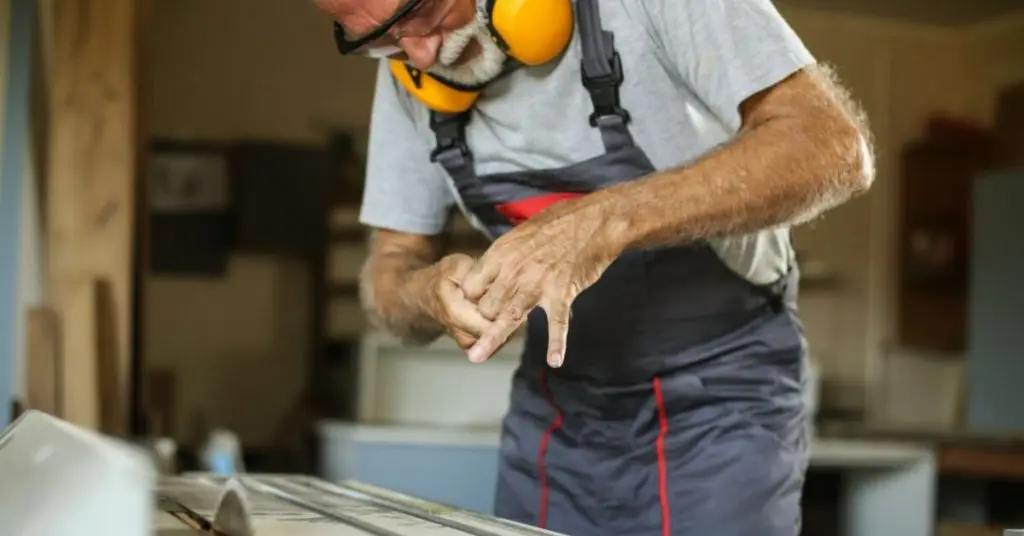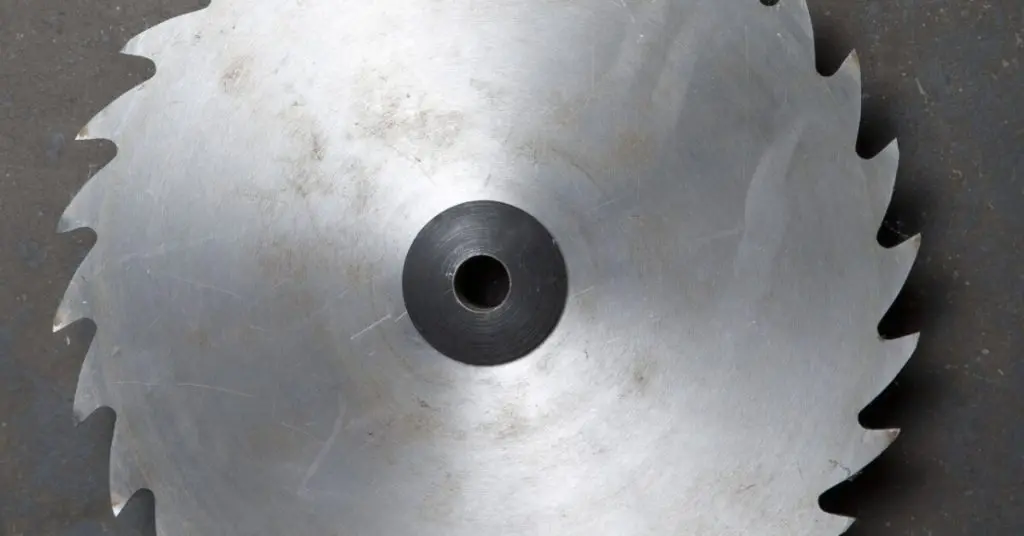Being able to make precise concrete cuts is extremely important. If concrete cuts are not precise, the underlying structure may be damaged, and the structural integrity could be weakened.
Furthermore, improper cuts also come with the risk of cracking, chipping, and damage due to contraction or expansion. This is true whether you are pavement cutting or using a concrete saw to cut a wall.
Whatever the case may be, failing to properly use a concrete saw can be disastrous. These kinds of saws can be very dangerous!
Due to the high-risk nature of concrete cutting, using the best possible equipment is therefore paramount. As far as concrete saws are concerned, the state-of-the-art models manufactured by VEVOR are considered some of the best in the world.
Table of contents
Understanding the Basics of Concrete Saw Operation
Before we start providing you with a step-by-step tutorial on exactly how to use a concrete saw, let’s first talk about some of the basics of using a concrete saw. A concrete saw cut may seem relatively easy to make, but there are a few things you need to know.
Safety Measures
First and foremost, there are a variety of safety measures that you need to take to remain safe while cutting concrete. First, you always want to wear breathing protection, because concrete dust is extremely poisonous and carcinogenic. You don’t want to inhale concrete dust.
Next, you also want to wear proper safety clothing, which includes specialized pants and shirts that are designed in such a way so that saw blades will get tethered in them, therefore preventing you from being injured.
Furthermore, your eyes and ears also need protection as well, because concrete saws can damage both your hearing and seeing. There are also other safety measures that you might want to take, such as wearing steel-toed boots, just in case the worst were to happen.
Equipment Setup
Before you start cutting concrete with your saw, you need to ensure that your equipment is properly set up. First and foremost, this means having the right kind of blade for the job at hand. Different types of concrete, as well as different depths you are cutting to, may require a different type of blade. The size of the blade is also important to consider.
Furthermore, you should always inspect your concrete saw before use, just to ensure that it is in working condition and that everything is totally safe. Inspect the saw for a cracked blade or any other broken components. The other point to remember here is that if you are doing wet sawing, you need to connect the water hose before you start.
Proper Handling
Proper handling is perhaps one of the biggest issues that many people face who have never used a concrete saw before. Remember, concrete saws can be extremely dangerous, and great caution is required when using them.
Therefore, whenever you are operating a concrete saw, always keep both of your hands on the respective handles. Never tried to use a concrete saw with a single hand.
Furthermore, never let go of the concrete saw when the blade is still moving. As long as the blade is still moving, you should always maintain your grip on the saw. Furthermore, never point the saw at anybody else while it is in use, and never make any jerking motions either.
When making a cut, one of the biggest mistakes you can make is to try to cut too fast and to push too hard. Too much speed and pressure will not serve you any favors, and may result in injuries.
Exploring Diamond Saw Cutting Techniques
When making saw cuts, there are a variety of techniques at your disposal. As far as a diamond saw cut is concerned, there are a few different techniques at your disposal, and which one you use depends on the purpose of your task. Let’s take a quick look at some of the different diamond saw-cutting techniques at your disposal.
Dry Cutting
One method of concrete cutting is known as dry cutting, and this involves the use of diamond blades without any kind of water. It’s great for outdoor cutting where water is restricted or not available, and for this purpose a very high-quality diamond blade is required. For instance, VEVOR concrete saws affixed with diamond blades are rather perfect for this purpose.
Wet Cutting
We then have the wet cutting technique, which as you might be able to tell, involves the use of water. Here, your diamond saw is cooled with the use of a continuous flow of water. This helps to cool down the blade to reduce friction and blade warping, while also minimizing airborne dust.
Flat Sawing
One of the major types of cuts made with a diamond saw is flat sawing, which simply involves cutting a variety of horizontal surfaces. This could include pavement, roads, and floors.
Wall Sawing
We then have wall sawing, which is when a concrete saw is used to cut inclined or vertical surfaces. Once again, the smaller 14” Vevor Concrete Saw affixed with a diamond cutting blade is ideal for this purpose. It’s not too heavy, yet has more than enough power to get the job done!

Expert Tips for Cutting Concrete Like a Pro
Here are some tips that you absolutely need to follow when using a concrete saw to make cuts.
Always be Safe
Never neglect to wear your personal protective equipment. You need to protect your eyes, ears, and everything in between. This means wearing safety cap glasses, hearing protection, a long sleeve shirt, steel toed boots, and gloves.
Prepare the Workspace
Next, you always want to make sure that your workspace is adequately prepared. This means that you don’t want any obstacles or debris in the way that may get in the way of you making a clean cut, or possibly even cause injury to yourself. If you’re inside, make sure to cover any items that you don’t want covered in concrete dust.
Timing Matters
When using a cement cutting blade for pavement cutting or horizontal concrete cutting, always make sure that the concrete is not totally cured, but not wet as well. It needs to be hard, but not fully cured.
Make Sure to Use the Right Concrete Saw
Realize that there are different types of concrete saws. These include cut off saws, air concrete saws, street saws, and walk behind saws.
Each of these types of concrete saws serves a slightly different purpose, so you should do some research in terms of which one is best for you. A model like the VEVOR 16” Concrete Saw might be right up your alley! There’s also a smaller 9” VEVOR Concrete Saw with a diamond blade, if that is more suitable.

The Blade Matters
Not only do you need the right saw for the job, but the right blade as well. There are regular steel blades, carbide blades, diamond-tipped blades, and more. Remember, the type of blade isn’t the only consideration, but the size of it as well.

Step-by-Step Guide: How to Use a Concrete Saw Safely
Now that we’ve got all of the safety tips covered, let’s provide you with a step-by-step tutorial on exactly how to use a concrete saw safely.
Pre-Operation Preparations
There are some important steps that you need to follow before you start cutting with your concrete saw, and it all starts with safety.
- Safety First: We really can’t stress enough just how important it is that you wear the right personal protective equipment. At the very least, you need to wear ear protection, goggles for eye protection, gloves for hand protection, and sturdy footwear such as the steel toed boots. Remember, concrete saws are dangerous and you require protection to use them.
- Work Area Inspection: You then also need to inspect your work area. You don’t want your work area to be full of debris and clutter, because you don’t want to fall over anything when using a concrete saw. Also, clear away any hanging debris such as wires. On that note, making sure that the workspace is well ventilated if you are working indoors is also important, because you don’t want to inhale concrete dust.

Equipment Setup
Next on the list, before you can start using your concrete saw, you first have to set it up properly.
- Blade Installation: First and foremost, you of course need to have the right blade for the job, and that means installing the blade on the saw. To do this, you want to loosen the nut that holds the spindle or arbor in place, place the blade in the appropriate location, and then pass the spindle through the center hole of the blade. You’ll then tighten the nut or bolt, depending on the model.
- Adjusting Depth: Although it depends on the exact concrete saw in question, each one should allow you to adjust the depth of the blade. In other words, here you are adjusting the cutting depth. There should be some kind of lever, knob, or dial that you can turn to do exactly that. Measure how deep you need to cut, and then adjust the cutting depth accordingly.

Powering Up the Concrete Saw
If you are using most regular concrete saws that are gas-powered, you’ll first need to prime the engine by pressing the primer bulb several times, then set the choke or throttle, and then pull on the pull cord.
However, the VEVOR concrete saw is much easier to use because it is electric. You literally just have to plug it in, hold down the safety, and then hold the activation button right on the grip. It really doesn’t get much easier than that.
Cutting Techniques
Once you’ve got your concrete saw up and running, the next most important thing for you to know is how to properly position yourself and guide the saw.
- Body Positioning: First and foremost, you should always have both hands firmly on the concrete saw at the appropriate locations, on the handles. If you are cutting pavement or a wall, make sure that your knees are always slightly bent so that you have a bit of impact absorption. Furthermore, always keep the saw blade pointing away from you and make sure to never let go of the saw while the blade is still moving. You always want to be behind the concrete sock.
- Guiding the Saw: As far as guiding the saw is concerned, the most important thing for you to know here is that you should never push down too hard or pull too hard. If you notice that the saw is meeting resistance, simply let the blade do its work and don’t push harder than you need to. Furthermore, always guide the saw in a straight line. These large blades are designed to move in a straight line and cannot move around curves.

Handling Challenging Situations
Of course, using a concrete saw may involve some challenging situations, so let’s take a quick look at how to deal with these.
- Dealing with Resistance: If you are encountering resistance when using a concrete saw, you need to be very careful. First and foremost, as mentioned above, don’t push down or pull backwards too hard. This may cause the blade to crack, snap, or otherwise break. Instead, move very slowly and let the blade do the work. If you still encounter resistance, you might need to change your blade. Furthermore, there may also be other obstacles in the concrete that you aren’t aware of.
- Emergency Procedures: If there happens to be an emergency, such as a cut or even a limb that has gone missing, the first step is to immediately stop or attempt to stop the blood flow, followed by calling the necessary medical professionals.

Post-Operation Cleanup
Once you’ve made your cut, the final steps involve the post operation clean up.
- Safe Shutdown: The number one rule when using a concrete saw is to never let go of the handles until the blade has fully stopped moving. Therefore, make sure that the blade is no longer in motion and that the unit has been turned off before you let go.
- Blade Maintenance: As far as blade maintenance is concerned, always inspect the blade after every use to see if it is damaged. If the blade is damaged in any way, it will need to be replaced. Furthermore, many saw blade teeth can be sharpened, so if you see that your saw blade is dull, you may want to sharpen it before the next use. Also make sure to properly clean the saw blade of any debris or grease, as this can affect its cutting ability.

FAQ
Let’s quickly answer some of your most frequently asked questions about how to use a concrete cell properly.
Why do they cut lines in concrete?
Lines are cut into concrete in order to allow it to expand or contract as needed.
Optimizing concrete saw blade direction?
To optimize concrete saw usage, make sure to move in the same direction as the blade.
How to cut a concrete wall?
To cut concrete walls, get the blade moving at full speed, insert the blade into the wall at the very top of the cut, and then slowly guide it down until the cut is complete.
How to tell if a diamond saw blade is dull?
If you notice that you’re experiencing great amounts of resistance, then your diamond saw blade is likely dull. You can also do a visual inspection.
How to cut a concrete block in half?
To cut a concrete block in half, start at one end of the concrete block with the saw already moving at full speed and then slowly and steadily past the blade from one end to the other.
What can cut concrete?
The best thing to cut concrete is a specialized diamond concrete cutting saw blade, such as those from VEVOR.
Conclusion
At the end of the day, using a concrete saw is not overly difficult, but it does need to be done right. If you follow the proper safety procedures when using a concrete saw, you should be totally fine. Remember, VEVOR has some of the very best concrete saws in the world, especially as far as electric models are concerned, not to mention that they also have some of the best blades in the world.





Hi there, just became aware of your blog through Google, and found that it’s truly informative.
I’m gonna watch out for brussels. I’ll appreciate if you continue
this in future. Lots of people will be benefited from your
writing. Cheers!